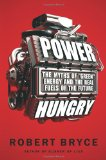I just finished a fairly engaging techno-thriller: Counterstrike: The Last World War, Book 2 . It's a follow on from The Last World War
. It's a follow on from The Last World War , something I read a few years ago. I happened upon the book at Borders while getting my daughter an AP prep guide; I had mostly forgotten about the earlier book.
, something I read a few years ago. I happened upon the book at Borders while getting my daughter an AP prep guide; I had mostly forgotten about the earlier book.
It's a typical techno-thriller, with a Stargate wormhole type of plot device. The kicker - aliens fighting a long (think generations) war create the technology, hoping to use it as a game changer, allowing them to deploy across their own planet. Instead, they end up accidentally opening wormholes to Earth, and humanity gets involved in the war.
Through the first book, it's not at all clear why the war was happening; in the second book, a vague "cold war gone hot" device crops up, with Earth siding with the "Western" side of the conflict. An anti-war group becomes something of a plot device in the second book, but not for long - mostly, they help set up the predictable plot twist that puts the book on the race track towards the conclusion.
The story was fun enough to read, in a "beach reading" sort of way - although I really wonder how much longer authors can pull out grizzled Vietnam war vets to fight again. Seriously - that's a long time ago now :) On the other hand, how many techno-thrillers have you read recently where a North Korean tank jockey is one of the good guys?
Anyway, if you pick up these books, don't expect anything deep. They are enjoyable yarns, but that's about it.
Technorati Tags:
scifi, techno+thriller











